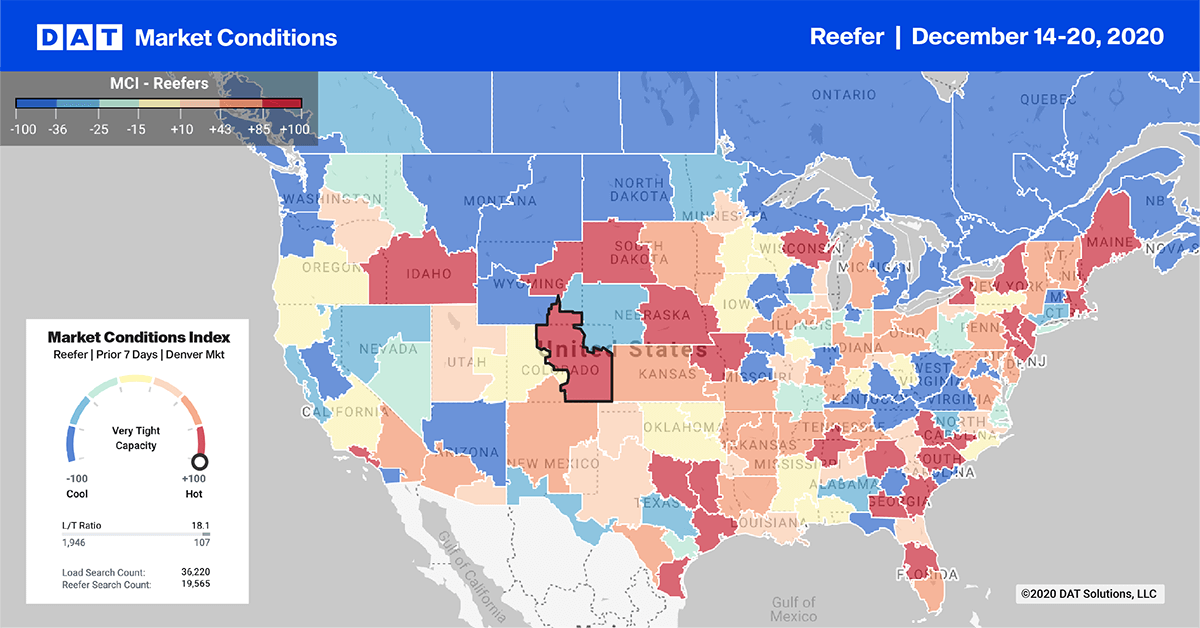The deeper we get into winter, the further south shippers go to meet U.S. demand for winter produce, which is why, at this time of the year, we start to see an increase in volume across the southern border from Mexico.
According to the USDA, truckloads of imported produce are now up just under 1% m/m, but still down 8% y/y as a result of reduced demand in the foodservices sector.
In addition to the “Winter Salad Bowl” in Yuma, AZ, where 90% of leafy greens are produced over winter, the Rio Grande Valley in the McAllen market starts to ship citrus, herbs and cabbage.
Reefer volumes in McAllen, TX, are up 3% w/w, and spot rates up slightly to an average of $2.23/mile to all markets, but as high as $2.53/mile for loads to New York City, where most outbound reefer loads are destined (receives just over 12% of loads). Los Angeles is the second largest destination for imported loads at 8%, followed by Philadepphia at 5%.
Find reefer freight and trucks on the largest on-demand freight exchange in North America.

In contrast to dry van, reefer volumes in all of our top 10 markets increased by 10% w/w on average. With the exception of Elizabeth, NJ (#1), where rates are up $0.03/mile, available capacity continued to loosen with spot rates down for the fourth week in a row in the remaining nine markets.
The large Allentown (#10) warehouse distribution market recorded a 13% w/w increase in load post volumes, but capacity loosened sharply forcing outbound rates down $0.27.mile to $2.44/mile.
Spot rates in the Reefer sector dropped $0.02/mile to $2.37/mile last week. Even though Reefer rates are still $0.39/mile or 20% higher compared to the same week in 2019, this sector appears to be cooling off the fastest of the three equipment types we track weekly.


